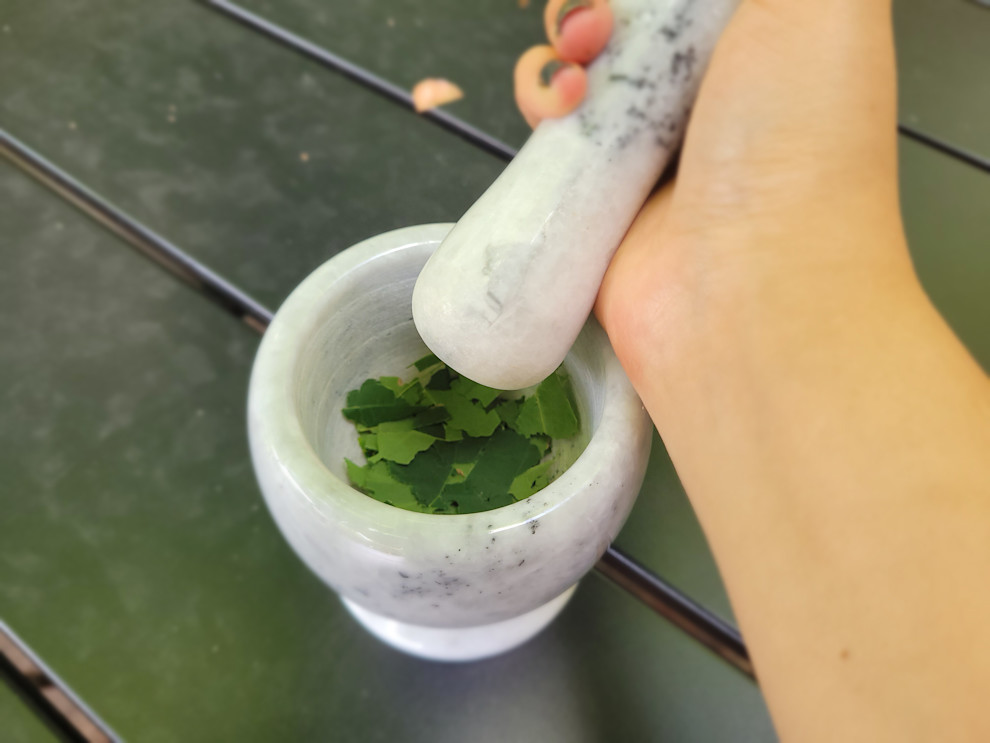Trees Company Blog
Try This Experiment to Unlock a Green Leaf's True Colours
Posted: 2021.08.24
Trees Company Blog
Posted: 2021.08.24
By Madeleine Bray
Have you ever wondered why green leaves change colour in the autumn, and what determines their new hue before they fall? This experiment, adapted from Focus on Forests Lesson Plan Autumn Adventures, will answer those questions and more!
Chlorophyll is a green pigment in most plants, primarily responsible for photosynthesis, the process that plants use to create their own food using sunlight, air, and water. This pigment is responsible for the lush green colour of our forests. But it isn’t the only pigment in leaves. All plants have secondary pigments that serve vital functions. While invisible in spring and summer, they shine through in the autumn.
Chlorophyll disappears when deciduous trees such as oaks, maples, and even tamaracks experience shorter days and cooler temperatures as seasons change. As the leaves receive less sunlight, chlorophyll levels drop, but the other pigments remain. The leaves appear to be a different colour, even though the pigments were there the whole time!
There are two categories of secondary pigments. Carotenoids appear as yellow to orange. They are the same pigments responsible for the colour of carrots. Anthocyanins appear as red to blue and play a silent role throughout the year as protectors from UV light.
Here is a fun way to unlock secondary pigments in deciduous tree leaves. You will need:
- A glass jar
- Rubbing alcohol
- Coffee filter
- Green leaves
- Pencil
- Tape
- Scissors
- Mortar & pestle (or a spoon and a shallow bowl)
- Clean paper

Process:
1. Tear the leaves into small pieces and mash into a pulp using the mortar and pestle.
2. Put the leaf mash into a jar and add just enough rubbing alcohol to cover it. Let stand for 5 minutes.
3. While the leaves stand, cut a piece of coffee filter paper that will touch the bottom of the jar while taped to a pencil, without it bunching up at the bottom of the jar, about 2.5 cm x 10 cm.

4. After 5 minutes, balance the pencil atop the jar and lower the filter paper into the jar. It should only just touch the bottom – if too long, remove and cut.
5. When liquid has moved halfway up the filter paper, remove it from the jar and lay it on a fresh sheet of paper to dry.
6. Observe the bands of colour that appear after the filter paper has dried.
For my experiment I used a sugar maple that turns a lovely golden yellow every fall. The bands on the paper reflect that change well.

This experiment works because the pigments in the leaves can dissolve in alcohol. The molecules of different pigments are different sizes, which allow the smaller ones, like most carotenoids and anthocyanins, to travel through the filter paper faster than the larger ones, such as chlorophyll. As molecules of the same size move the same speed, coloured bands will form on the filter paper as the liquid is dispersed and then dries. This separation of pigments through the filter paper is called chromatography.
Try this experiment at home and see if you can guess what colour your favourite local trees will turn!
For more forest fun, check out other education resources available on our website.